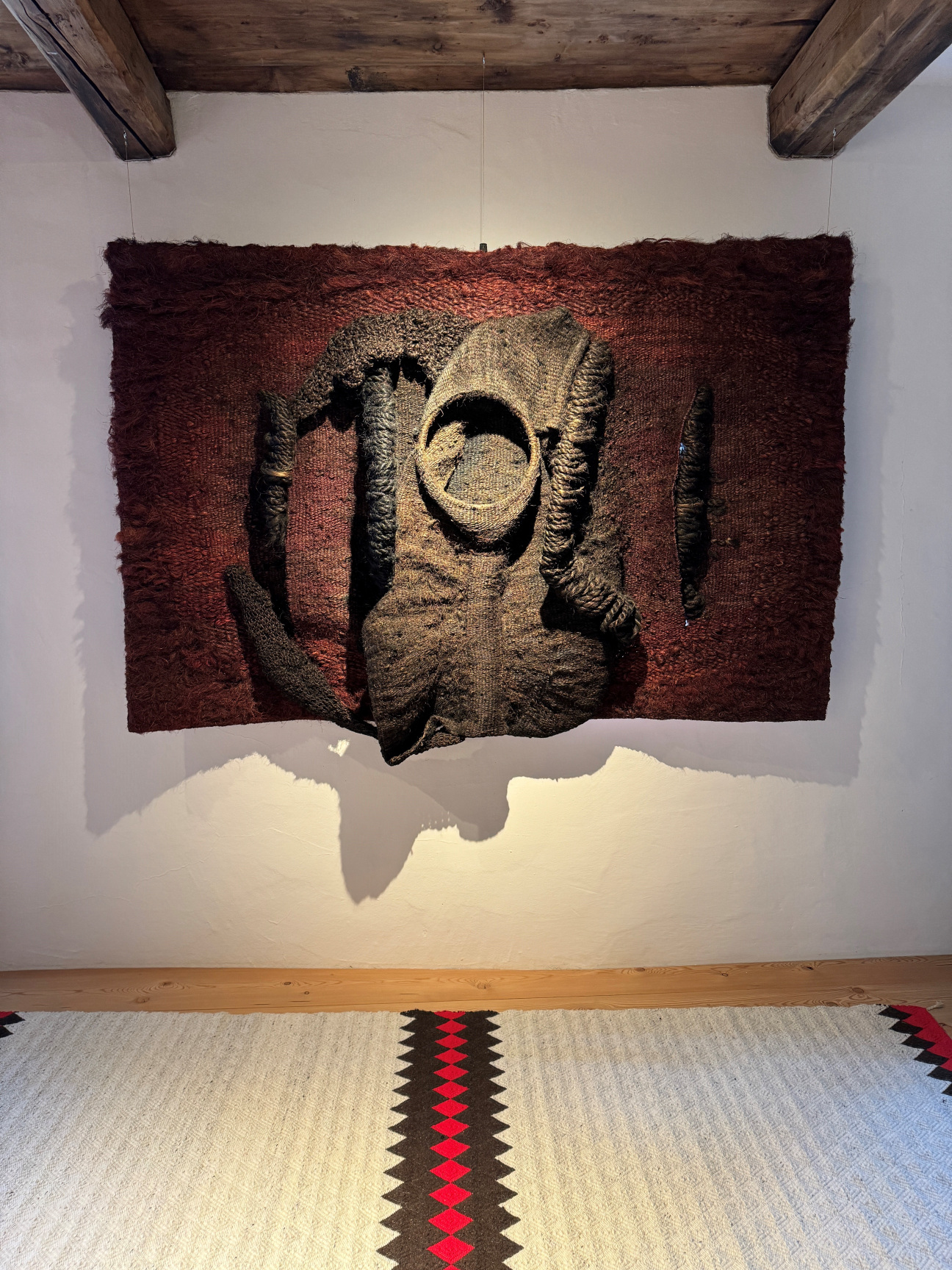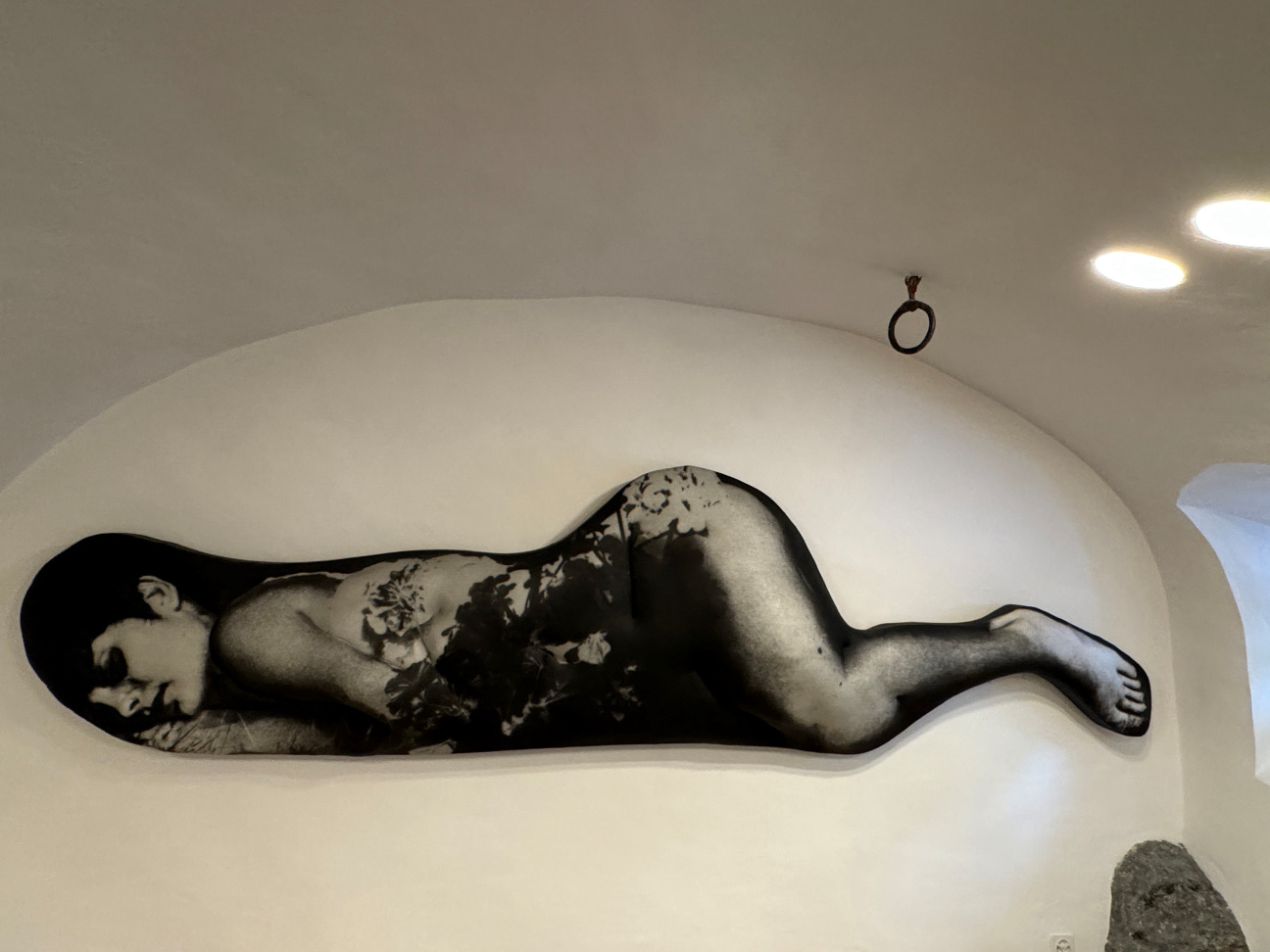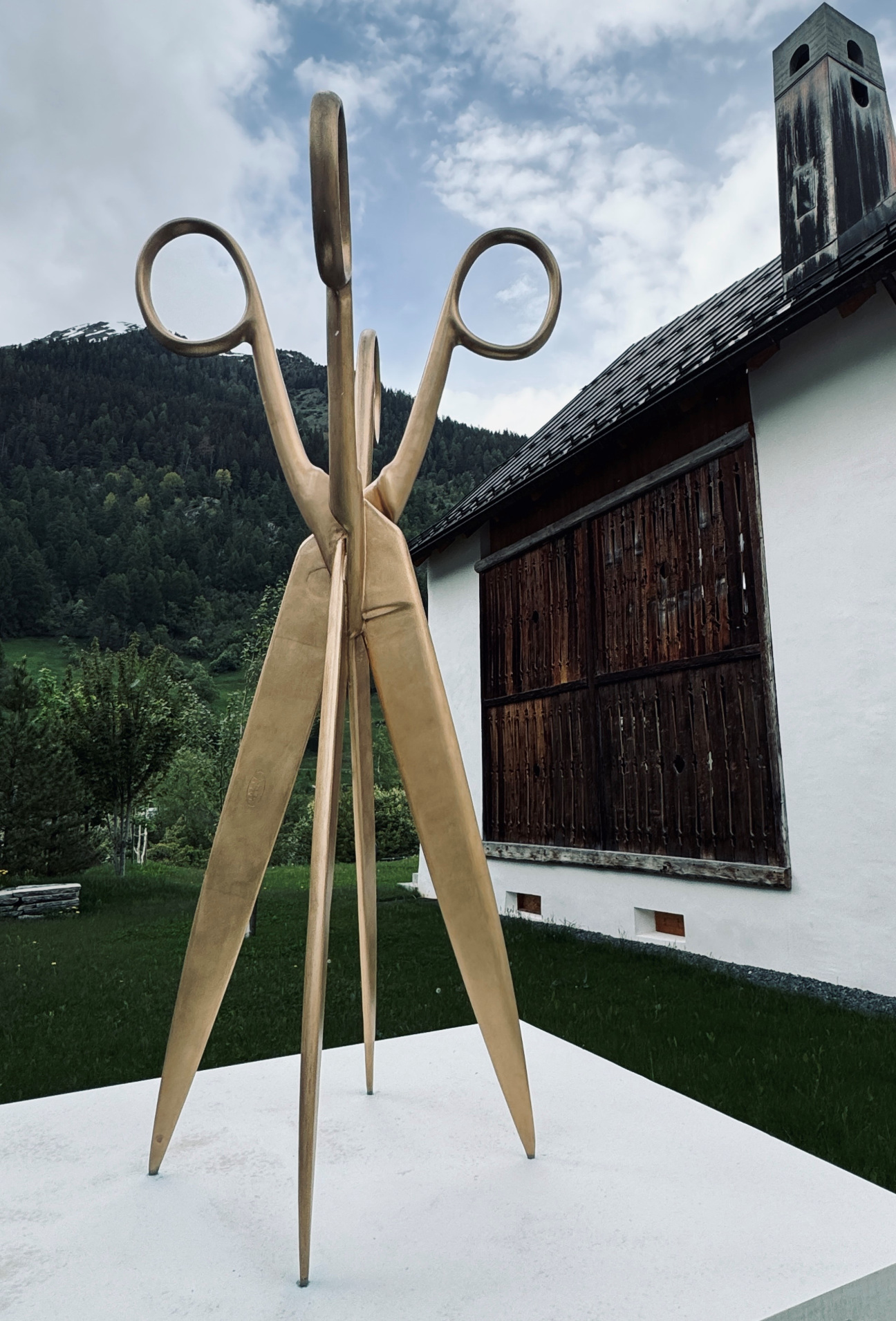
The mecca for contemporary female art lies tucked away along the Engadin Valley of the Swiss Alps in what was once a 12th-century monastery, now transformed into Grażyna Kulczyk’s Muzeum Susch.
Despite seeing tens of thousands of visitors since opening in 2019, the museum's road to realization was a long and arduous one, much like its rocky, mountainous environment in the small town of Susch. The collector, determined to (literally) carve out a space she knew was missing in the art world, had some 9,000 tons of mountainous rock removed to create gallery space underneath the newly restored monastery, even leaving some of the rock exposed and incorporating it into the museum’s twists and turns.
The space now houses site-specific installations from the likes of Mirosław Bałka, Jarosław Kozłowski, Sara Masüger, and Adrián Villar Rojas, as well as pieces from Kulczyk's own decades-spanning collection. Over time, it's developed a strong focus on the work of women artists throughout history. "My collection isn't just about fitting into my living space," says the entrepreneur and philanthropist, who is based in Engadin. "It's never been about matching the decor. Instead, art has always been a way for me to explore new ideas and think beyond the usual limits."
Here, the lawyer turned philanthropist shares the creatives currently on her radar, insight into her acquisition process, and a peek at the pieces that do in fact make it onto the walls of her home.

Where does the story of your personal collection begin?
My journey into art collecting began during my university years while I was studying at law school. As an art enthusiast, I found affordable art in the vibrant and evocative posters from the renowned Polish School of Posters. These posters were not only accessible but also deeply resonated with my growing passion for visual culture.
What is the first piece you ever bought?
While the specifics of my earliest acquisition are lost to time—considering it was over 50 years ago—I vividly recall my first significant purchase at Sotheby's. This was a notable event for someone from our part of the world shortly after the transformations of the late 1990s. I instinctively bought Antoni Tàpies's Quadro N 8 from 1961. This purchase also marked my first bid at an auction and was the first bid handled by Isabelle Paagman, who is now a senior contemporary art specialist and auctioneer. Our friendship has endured to this day.
Which of your works provokes the most conversation from visitors?
In addition to a program focused on women at my museum, Muzeum Susch, I have curated a collection of artworks for permanent display that reflect my personal and deliberate choices for the museum’s DNA. The piece that has sparked the most conversation is Piotr Uklański's “Real Nazis" which asserts that war in Europe is not merely a historical concern. Interestingly, much of the initial criticism subsided after the onset of the war in Ukraine.

How has the local art scene influenced your collection?
While I have engaged in site-specific collaborations with Swiss artists such as Not Vital, Mirko Baselgia, and Sara Masüger, the local art scene has not significantly influenced my collection. This is understandable, given my dedicated mission to champion avant-garde women artists who have been overlooked or misinterpreted in global art history. Therefore, the challenges I confront in art history extend well beyond local considerations.
Which artist are you currently most excited about and why?
I am deeply attentive to the work of three radically different artists at the moment: Vera Fischer, Huguette Caland, and Jenna Gribbon. Each of them brings unique perspectives and styles that captivate me and I am following their work closely.
What factors do you consider when expanding your collection?
When expanding my collection, both now and in the future, I maintain a consistent and coherent approach. My primary objective is to establish a solid foundation in the matrilineal history of art, with a focus on women's art from the 1950s through the 1980s. This deliberate focus allows me to spotlight underrepresented voices and periods. Occasionally, I also incorporate works that, while they may not strictly align with this thematic focus, captivate me on an intuitive level.

What was the most challenging piece in your personal collection to acquire?
Acquiring pieces for my collection has presented multiple challenges. The first hurdle is identifying artists who add a unique dimension to my narrative. The next challenge lies in securing museum-quality works. Finally, balancing high quality with a reasonable purchase price often proves to be the most difficult. Given these challenges, I find myself investing considerable time and effort to acquire the types of works.
What was your biggest influence in fostering your passion for art?
During my turbulent youth, my passion for art was crucial. Art provided not just compelling narratives, but also a medium through which I could express my rebellion against bourgeois norms. This intense period of creative exploration fundamentally shaped my passion for the arts.
What feelings would you like your collection to inspire in the people who experience it?
I firmly believe that art serves to ask questions through its visual messages, eliciting unconventional responses to complex issues. Artists often perceive societal concerns long before they become apparent to the broader public. As such, when individuals engage with the art intuitively, they encounter a spectrum of emotions—fears, hopes, and warnings—demonstrating art's profound impact on our collective consciousness.










 in your life?
in your life?

